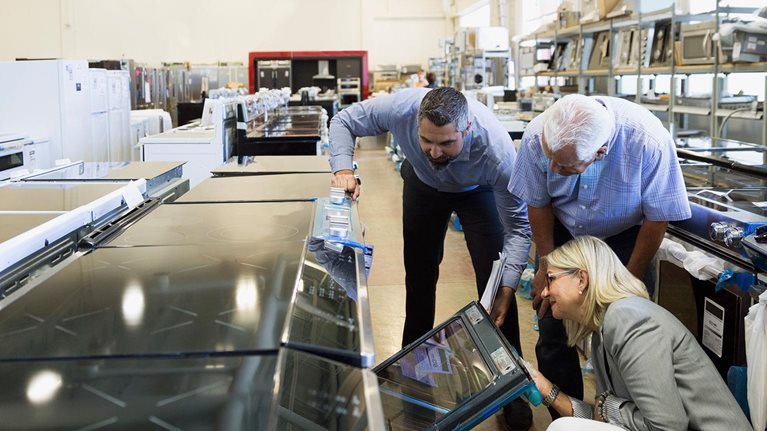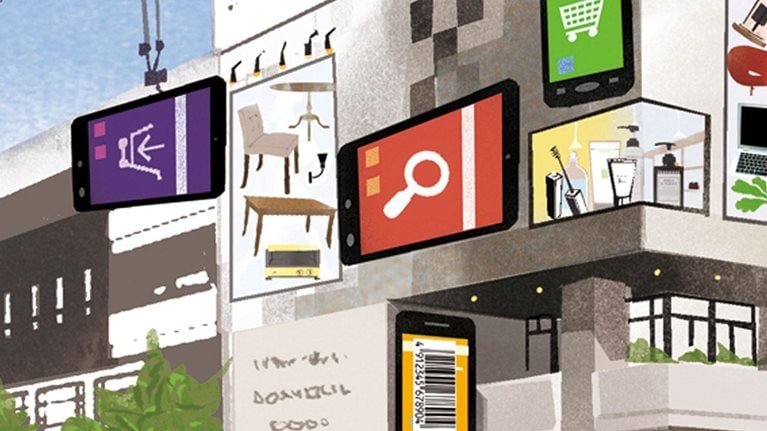Much has been made lately of the “retail apocalypse,” with headline after headline declaring the demise of retail as we know it. Yes, store closures have indeed outpaced store openings across the US market in recent years. And, yes, retail foot traffic in both mall stores and stand-alone stores has been, and continues to be, on a downward trajectory. It’s also true that the retail landscape is littered with bankruptcies—upward of 40 in the past two and a half years in North America alone, with more looming on the horizon.
Stay current on your favorite topics
Yet, at the same time, Amazon and other digital disruptors had a massive run-up in share in a slew of retail categories. Brands are getting into the retail game themselves and going directly to the consumer. The pace of M&A and private-equity activity in the sector has quickened in recent months. Perhaps most telling of all, US retail sales have actually risen: the 2017 total of $3.53 trillion is a 3.9 percent increase from 2016.
So, is traditional retail dead? Or is it undergoing a metamorphosis—and more alive than ever?
In our view, the answer is clear: the US retail industry, far from being moribund, is experiencing disruption—and reinvention—at unprecedented speed. It’s not a story about the malaise of an entire sector but rather a tale of two worlds. A confluence of trends has changed the playing field, forcing retailers either to adapt and innovate or to suffer painful losses or imminent demise.
In this new playing field, consumers are promiscuous in their shopping, easily switching from one brand or channel to another. Technology not only drives consumer engagement but also changes the playbook for retail productivity. Industry boundaries are blurring: nonretailers are selling to consumers, while retailers are expanding into adjacent sectors in pursuit of growth. The war for talent rages on, and retailers are battling companies both inside and outside retail to attract the best people. And, of course, other large-scale risks and uncertainties—new trade tariffs and cyberthreats, to name just two—are keeping many a retail CEO up at night.
If there was ever a time to challenge assumptions and take bold action, it is now. In the face of this disruption, formerly optional moves have become “must dos.” Retailers that sit on the fence risk getting outcompeted by aggressive, fast-moving, forward-thinking competitors.
In this article, we discuss five disruptions and five imperatives for competing in the retail environment of the future. While a few retailers may be ahead of the game in one or more of the imperatives, none are yet excelling in all of them.
A disruption like no other: Key questions to ask now
Although many of the trends we discuss have been evident for several years, the certainty, combination, and acceleration of these forces have resulted in a disruption unlike any that retailers have faced before. This is the new normal.
Are you meeting consumers where they are—both physically and digitally?
Gone are the days when a retailer could rely on brand loyalty. Recent surveys have found that millennials tend to perceive newer brands as better and more innovative, and that more than 60 percent of Gen Z consumers are attracted to smaller “new” and “fun” brands. Many younger consumers, who want brands to be transparent and approachable, say they distrust large corporate brand names. Being an older, well-established brand name—once a major asset—is now something of a liability.
Against this backdrop, retailers and consumer brands must work harder to engage consumers—and the most effective way to do so is via digital media. Customer relationships are now digital-centric, with consumers spending, on average, almost six hours per day on digital media. Digital channels continue to be the source of most retail growth and will soon influence most retail purchases: Forrester Research estimates that by 2022, e-commerce will account for 17 percent of total retail sales (ranging, by category, from 4 percent in grocery to 66 percent in electronics), while an additional 41 percent will be digitally influenced offline sales (with digital channels influencing as much as 30 percent of offline sales, even in mostly offline categories like grocery).1
The shift to online sales, coupled with rising labor costs, puts pressure on store economics. At best, the economics are break even; at worst, a 5 percent shift from in store to online can reduce earnings before interest and taxes (EBIT) by 20 to 30 percent. At the same time, the “buy online, pick up in store” option, now offered by many retailers, boosts store traffic. Retailers must therefore evaluate store economics within the broader context of omnichannel economics.
Consumers’ embrace of digital media has also made retail competition more intense: savvy upstart brands can quickly gain a foothold online, even bypassing traditional retail channels. E-commerce platforms, such as Shopify, have enabled value and luxury brands alike to launch direct-to-consumer sites without making big investments in tech capabilities. Smaller brands can market themselves inexpensively yet effectively on the internet and on social networks. These innovative brands selling directly to consumers also further reinforce the idea that traditional retailers are stale, as they don’t carry these new brands.
Another effect of digitization: consumers now have sky-high expectations when it comes to convenience. They’ve become accustomed to near-instant gratification: on-demand movies and music, speedy delivery of online orders, and even smart devices that can purchase items automatically. For all retailers, this means having to ensure a convenient, frictionless shopping experience both offline and online. A retailer’s accessibility and relevance are no longer just about physical location but also about digital presence, whether through mobile sites and apps (their own or others’) or smart devices in cars and homes.
Are technology and analytics working for you?
Digitization is revolutionizing not just how retailers engage with consumers but also how they unlock productivity. Whereas scale was once the primary lever of cost and efficiency, technology now plays that role across the value chain. In-store retail technologies, from handheld devices to sensors, are improving store processes. Robotic process automation is speeding up back-office tasks. Retailers have access to more operational data than ever, can conduct sophisticated analytics, and can tap into artificial intelligence (AI) to inform everything from product design to supply-chain management to store experience.
Our research suggests that currently available, at-scale technology could help automate more than 55 percent of tasks in a classic grocery store. This automation would reduce selling, general, and administrative (SG&A) costs; enhance customer and employee experience; and free up funds to fuel growth elsewhere. Furthermore, research from the McKinsey Global Institute has shown that the retail industry could reap global benefits from AI worth $400 billion to $800 billion—more than any other industry. Such advanced technologies were once too expensive and unproven, but their economics now work.
At the same time, there are dramatic business implications that retailers will need to grapple with. For example, with more processes and information being digitized, cybersecurity becomes ever more critical. Yet, only 16 percent of global organizations believe their risk-management processes are mature enough to handle cyberthreats.2
How will you compete with the nonretailer retailer?
Many retailers aren’t just retailers anymore—they’ve expanded into services, healthcare, and other adjacent sectors. Target acquired delivery-focused companies Grand Junction and Shipt, CVS Health acquired health insurer Aetna, and IKEA now owns TaskRabbit. Conversely, nonretail companies are encroaching on retailers’ turf. Fitness companies like Peloton are selling products, such as exercise bikes and athletic apparel, as well as experiences and technology.
China’s Alibaba, JD.com, and Tencent—and, following their lead, Amazon—became online juggernauts precisely by crossing industry boundaries. These pioneer companies created ecosystems that integrate marketplaces, services, platforms, and digital content. In the US market, Amazon is a retailer as well as an e-marketplace, a web-services provider, a producer of movies and TV shows, a maker of smart-home devices, and an online pharmacy, among other things. As these cross-industry ecosystems capture an ever-larger share of consumers’ time and attention online, they’ll easily grab more and more market share.
Are you positioned to win the war for talent?
In order to win in this era of disruption, retailers can no longer rely on the traditional talent profiles; they need to hire the would-be disruptors. This means acquiring new skills, including data science, software development, and advanced analytics. And as retailers expand into becoming service and experience providers, they’ll also need expertise in new industries.
Finding best-in-class talent is tough, not least because retailers are competing with direct-to-consumer companies, energetic start-ups, and tech giants—all of which tend to be more appealing to the most in-demand talent profiles. Even the hottest retail brands may not be perceived as desirable employers, as they’re tainted by the retail industry’s reputation of being old fashioned and slow. An additional challenge for retailers is that talent is concentrated in the major coastal cities.
Would you like to learn more about our Retail Practice?
Another facet of the war for talent, both at the front line and in corporate offices, is the potential displacement and necessary reskilling of retail workers, driven by the advent of AI and automation. In our view, this should be the number-one obsession of chief people officers and heads of HR in retail. They will need to get ahead of it before competitors, regulators, or public-opinion shapers force the issue.
Are you prepared for the local impact of global risks?
With a number of emerging-market companies experiencing supercharged growth, it’s no surprise that they’re looking to expand beyond their home countries and even their home continents. Retailers with global aspirations—including Alibaba and JD.com—are eyeing the US market as their next target for expansion.
Meanwhile, on the global stage, much remains in flux. The level of uncertainty and volatility surrounding global trade is higher than it’s been in recent years, with new tariffs, changes in several countries’ trade agreements, new data-privacy rules and regulations, and geopolitical developments all across the globe. For most retailers in the Western Hemisphere engaged in offshore sourcing, geopolitical forces could fundamentally reshape the P&L.
No longer optional: Key actions to take now
To survive and thrive in the coming decade, retailers must refashion their businesses to capture the opportunities presented by the totality of these trends. For many retailers, it’s now do or die. Operational discipline will be more critical than ever, as retailers will need to find funds to fuel these transformations. Here are five imperatives—not suggestions—for companies that aim to be tomorrow’s retail winners.
Reimagine the store
Since established brand names mean much less to consumers than they used to, the basis of retail competition is shifting from price and product superiority to privileged insights and customer experience. In light of this shift, there’s no doubt that physical stores can still be highly effective consumer touchpoints, but retailers need to think hard about the role of the store. Stores must be tightly integrated with the online channel, enabling online sales while simultaneously offering experiential features and cutting-edge technology that sets the store apart.
Nike does an admirable job of marrying in-person experiences with digital capabilities in its stores. At the company’s flagship store in midtown Manhattan, customers can use the Nike app to reserve products for pickup, scan QR codes on mannequins to check for available colors and sizes, pay for merchandise instantly, and book in-store consultations with Nike experts. Another New York City store, in the SoHo neighborhood, boasts athletic environments—such as a basketball half-court and a treadmill—enhanced with cameras and digital screens to give shoppers an immersive experience and real-time feedback.
Because convenience has become increasingly important to consumers, retailers should deploy technology that makes shopping easy and seamless. Food retailer Ahold Delhaize’s no-checkout “tap to go” technology is one example. Apparel retailer Everlane allows customers who have registered on its website to “shop walletless” in its stores. At the New York and San Francisco stores of the apparel brand Reformation, customers use digital screens to select items they want to try on; store associates then place the items in dressing rooms.
Sweat your tech and analytics spend
Technology and advanced analytics represent massive opportunity in retail. Advanced analytics should inform retailers’ decisions across the value chain—from targeted pricing and promotions to smarter category management and localized assortment planning. In back-office functions, analytics and machine learning can increase efficiency and effectiveness, reducing cost to fuel efforts on more strategic priorities.
Personalized marketing, in particular, can unlock enormous value: retailers have seen sales uplift of 10 to 30 percent and as much as 5 percent improvement in customer acquisition. Using advanced analytics, retailers can monitor customer “signals”—such as purchases, online browsing, and social-media posts—which should then trigger relevant and timely personalized messages. And retailers shouldn’t wait for perfect systems or perfect data to get started cultivating real-time relationships with individual consumers. Although one-to-one personalization is the goal, even one-to-many is better than no personalization at all.3
There’s much higher scrutiny today, from both inside and outside companies, on resource allocation and returns on tech spending, but the right investments can pay off handsomely. Retailers that are technology leaders can generate two to five percentage points greater EBIT than technology laggards.
Pursue partnerships as a new way to compete
Witnessing the seemingly unstoppable growth of retail ecosystems like Alibaba and Amazon, traditional retailers are realizing that they can’t go it alone, because of both capability gaps and the sheer financial burden of keeping up with technology cycles. Some retailers have joined forces with companies in other industries, allowing them to amass consumer touchpoints, gather new consumer data and insights, or access capabilities they couldn’t otherwise afford. Examples include Kroger partnering with UK-based Ocado to build 20 automated warehouses in the next three years, several grocers linking up with delivery service Instacart, and McDonald’s working with Uber Eats to offer food delivery from thousands of McDonald’s restaurants around the world.
Retailers should also seek to establish consumer touchpoints within the large ecosystems: Alibaba, Amazon, Google, JD.com, and Tencent. For example, several retailers—including Carrefour, H&M, and Walmart—have formed partnerships with Google. (Recognizing their outsize influence, even the ecosystems themselves are partnering with each other. Amazon has a storefront on Alibaba’s TMall. Google and Tencent announced a long-term agreement to share patents. Tencent has an ownership stake in JD.com.) Retailers must determine what they bring to the table in both data and capabilities and how to integrate such partnerships into their strategy.

Where stores can still compete—and win
If retailers have the cash and capabilities, they could perhaps create their own ecosystems. Consider the following scenario: a drugstore chain partners with a health insurer, a chain of fitness centers, a physician-referral service, and a health-focused tech company, like Fitbit. Such an ecosystem would offer a single, comprehensive network for a consumer’s health and wellness needs. Part of this strategy should be a reimagination of the retail business model: for instance, the ecosystem might offer rentals, subscriptions, ad space, or digital goods, all of which hold significant potential as new revenue streams and new ways of reaching customers.
Become an agile, talent-first organization
Because speed is at a premium, agility must become a way of life for retailers. There are, of course, SG&A benefits associated with organizations implementing flatter structures with flexible networks of teams, but agility is about so much more. Agile companies are three times faster at going from ideation to implementation and two times more likely to take bold risks to transform the customer experience.4 For retailers, becoming agile means moving away from the heavily matrixed organizations and meeting-driven cultures of the past and instead forming small, cross-functional teams that use “concept sprints” to design, test, and scale initiatives.5
Just as essential as agility is an organization-wide emphasis on talent. What does it mean for a retailer to put talent first? Practically, it means coming up with a new value proposition for attracting and retaining a new breed of retail employees. It means looking for candidates in nontraditional places, including the so-called gig economy, in which 20 to 30 percent of the US working-age population already participates. Retailers must create a culture for new talent profiles to succeed in the organization and offer creative options and approaches (such as virtual working environments) to support different ways of working. Some retailers, including Target and Walmart, have opted to secure needed capabilities through “acqui-hiring,” or acquiring start-ups primarily for their talent. Retailers must also develop strategies for reskilling and retraining the workforce.6 Simply put, company leaders must be convinced of—and then act on—the fact that without the right people and the right skills, success just won’t be possible.
Take a 360-degree view of risk
With disruption comes uncertainty, and retailers must ensure they can respond rapidly to fast-changing circumstances. Take the issue of tariffs: if new tariffs on Chinese imports materialize, a company that is heavily reliant on Chinese manufacturing could suffer devastating financial consequences. Retailers face a broad range of other risks as well, including brand and reputation risk, activist investors, cyberattacks, and data-privacy breaches. Yet a recent McKinsey survey of more than 1,100 global companies found that boards spend less than 10 percent of their time on risk management—a percentage that hasn’t increased in the past few years.7
It’s critical for retailers to cultivate strong risk-identification and risk-management capabilities and to create and prepare for a variety of scenarios systematically; taking lessons from the banking sector could be one idea.8 And retailers must develop strategies for data protection and digital resilience, the hallmarks of which include an engaged and aware frontline staff, differentiated protection for the most important assets, and active defenses that can be deployed in real time.
Retail is in the midst of a disruption like no other, which is forcing an existential crisis. Every retailer must decide whether or not to get ahead of the curve and redefine its strategy and operating model to win in this era of disruption. Some are taking a wait-and-see stance; others are moving too cautiously and making little impact. But there are real costs to waiting that may never be recoverable. Only by heeding the imperatives discussed in this article—and acting with urgency—can retailers position themselves for a winning future.
This article appears in Perspectives on retail and consumer goods, Number 7, January 2019. Download the full issue here (PDF–6.4MB).


